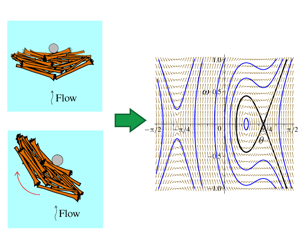Article contents
A theoretical analysis of the fluid–solid interactions governing the removal of woody debris jams from cylindrical bridge piers
Published online by Cambridge University Press: 14 January 2020
Abstract

This paper proposes a theoretical model to describe previous laboratory observations of the dynamics of debris accumulations around bridge piers of cylindrical shape. The model is based on the assumption that the observed dynamics is mainly governed by dynamic changes of the point of application of the drag force exerted on a solid body formed by debris accumulated around a pier. A phase-plane analysis of the resulting nonlinear system of ordinary differential equations shows that the model captures the main patterns observed in previous laboratory experiments, including an oscillatory motion and the removal of debris from the pier by the flow. The model provides a theoretical basis for the analysis of the conditions required for debris jams to remain stable over long periods of exposure to impinging flow. Namely, the model indicates that the stability of debris accumulations primarily depends on geometrical asymmetry and on the length of the extension downstream of the pier. The former induces the torque required to rotate the jam about the pier, while the latter produces a stabilising effect after the body rotates.
- Type
- JFM Papers
- Information
- Copyright
- © The Author(s), 2020. Published by Cambridge University Press
References
- 12
- Cited by




